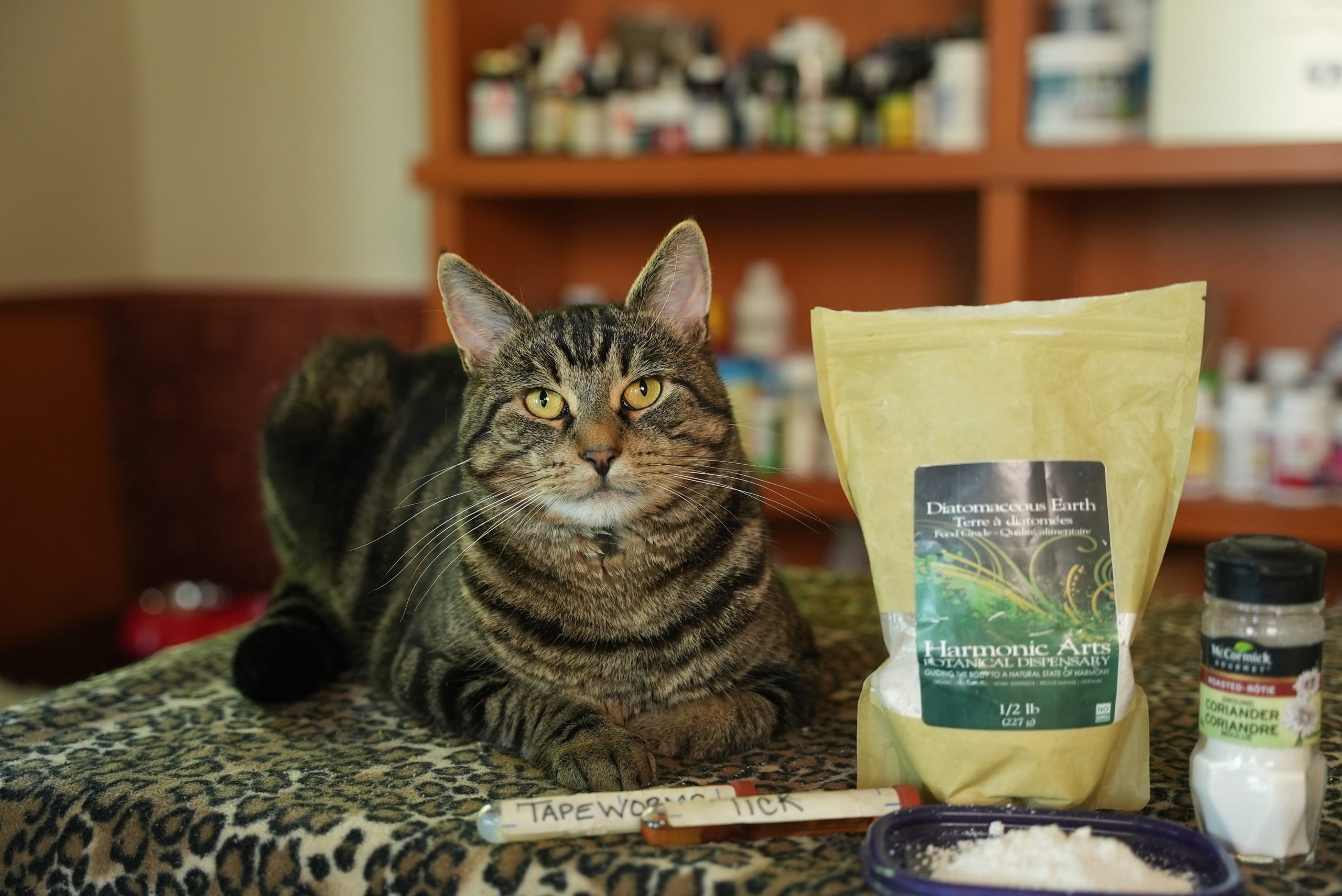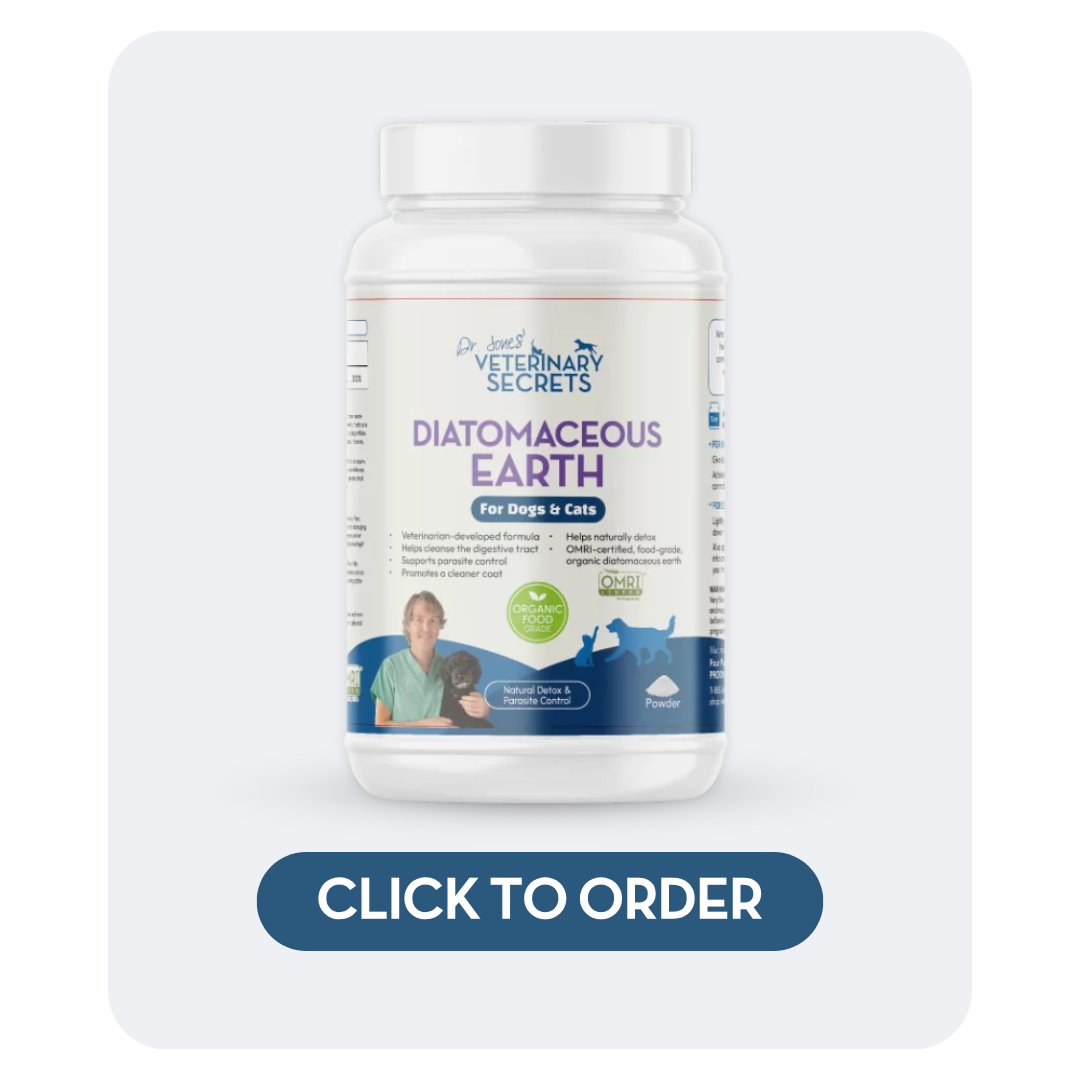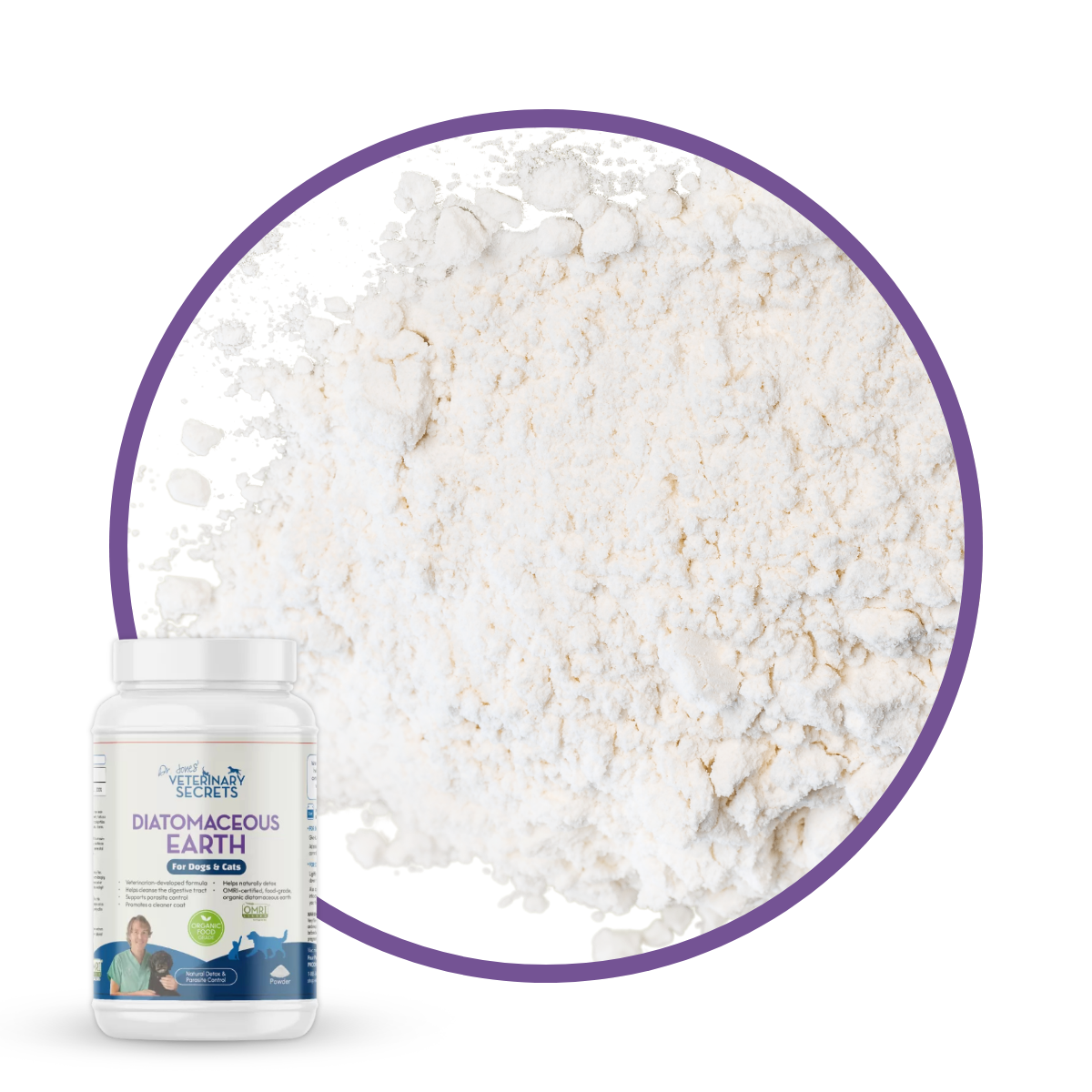Natural Parasite Control for Pets: Diatomaceous Earth’s Benefits and Uses
![]()

Diatomaceous Earth for Pets: Natural Parasite Control or Just Hype?
Today, let’s talk about a natural remedy that’s gained a lot of attention—and maybe even more controversy—among pet owners: Diatomaceous Earth (DE). It’s being hailed as a powerful tool to fight parasites in pets, but does it really live up to the hype? Should you be using it for your dog or cat? Let’s dive in and explore.
What is Diatomaceous Earth?
Diatomaceous Earth is a fine, white powder that resembles flour. It consists of the fossilized remains of tiny aquatic organisms that lived millions of years ago. Over time, these microscopic organisms broke down into a type of sedimentary rock, which, when ground up, looks like fine dust. When you look at DE under a microscope, it appears as tiny, sharp shards of glass.
This is where its power lies. The mineral silica in DE works as a natural insecticide. These tiny shards pierce the exoskeletons of pests—fleas, ticks, mites, and even slugs—causing them to dehydrate and eventually die. It’s highly effective as an external insecticide and is even used in various industrial products, including filters and anti-caking agents.
How DE Works as an Insecticide
Diatomaceous Earth works in a few important ways:
-
Absorption of Toxins: DE absorbs harmful toxins from the environment, which makes it an excellent tool in cleaning up spills or filtering air and water.
-
Natural Insecticide: DE is widely used in over 150 products registered for controlling insects like bed bugs, fleas, ticks, mites, and ants.
-
Topical Use for Pets: Sprinkling DE on your pet can help control fleas, ticks, and other pests. It works by killing external parasites when they come into contact with it.
External Parasite Control
DE has shown to be especially effective against external parasites. It kills fleas, ticks, and mites by penetrating their exoskeletons and drying them out. It’s also used to control mites in chickens and bed bugs in homes. A recent study in 2025 found that DE was particularly effective at killing the American dog tick—a common pest that carries diseases.
For your pet, you can sprinkle DE on their fur and in areas where pests are likely to be hiding. It’s great for breaking the life cycle of parasites by targeting eggs and larvae, which makes it even more useful when sprinkled around your home or garden.
What About Internal Parasites?
Here’s where things get a bit more complicated. While DE has been shown to work wonders for external parasites, the research on its effectiveness for internal parasites (like worms) is not as strong. That said, there is an interesting study involving chickens, where DE helped reduce internal parasite loads when added to their food.
For internal parasite control in dogs or cats, the science isn’t quite there yet. However, many pet owners have used DE successfully to treat and prevent parasites like tapeworms, which are often picked up from eating infected fleas or rodents. Though there isn’t a scientific consensus, many people swear by DE’s effectiveness.
Using DE as a Detoxifier
Some people claim that Diatomaceous Earth can act as a detoxifier for pets, helping to bind to and remove toxins like heavy metals from the body. While I don’t typically recommend “cleanses,” DE does have some potential to bind to certain substances in the digestive tract and carry them out of the body. Think of it like activated charcoal—it’s not a miracle, but it could be helpful in specific situations.
How to Safely Use Diatomaceous Earth for Your Pets
If you decide to use Diatomaceous Earth for your pet, it’s essential to follow a few safety guidelines:
-
Always use food-grade DE: Ensure the label specifies that the product is food-grade and safe for both internal and external use. Non-food grade DE contains higher levels of silica and should not be used for pets.
-
Avoid inhalation: DE is fine powder, so when handling it, be careful not to inhale it. It can irritate your lungs, including your pet’s. Mix it with food or water to avoid the dust cloud.
-
Proper Dosage: For internal use, I recommend starting with 1/2 teaspoon per 20 pounds of body weight daily. You can mix it into your pet’s food—wet food or canned food works best for this. Most people follow a cycle of 7 days on, 7 days off to align with the parasite lifecycle, but using it daily for up to 30 days is common.
How to Use DE Topically
For external parasite control, I suggest:
-
Use food-grade Diatomaceous Earth.
-
Sprinkle lightly: Use a container with a powder dispenser (like an old spice bottle) to lightly sprinkle DE onto your pet’s fur.
-
Spread evenly: Use a flea comb to spread the DE throughout the fur, focusing on areas like the belly, armpits, and under the tail.
-
Use weekly: For best results, apply DE weekly to help control fleas and ticks.
Is Diatomaceous Earth a Miracle Cure?
No, Diatomaceous Earth isn’t a cure-all, and it’s not going to solve every pest problem. But it is an excellent natural option for external parasite control, and it can be helpful for internal parasites in some cases.
For those who want to avoid more toxic chemical treatments, DE can be an effective alternative. I’ve seen firsthand how helpful it can be in keeping pets healthy and pest-free.

Try Dr. Jones’ Diatomaceous Earth for Pets
I’m excited to share that we’ve created our own version of Dr. Jones’ Diatomaceous Earth for Dogs and Cats. This product is safe, effective, and free of toxins—a natural alternative to chemical pest treatments. If you haven’t tried it yet, you may want to consider giving it a shot for your pet. It’s a cost-effective solution that could make a big difference for your furry friend.
Interested in learning more? Click the link below to discover more about our Diatomaceous Earth for pets.











Hi Dr Jones,
I downloaded your book but I’m not computer savvy and was wondering if you have a hard copy I can get that would be so much easier for me
My email is yardart2008@gmail.com that’s ok if I have to pay for it, thank you for all your help for our loved pets.
Our free eBooks are available in digital format only, but Dr. Jones does offer printed books for purchase. You can find them both on Amazon and on our official website.
Here are the links for your convenience:
Amazon:
US – international
https://www.amazon.com/Veterinary-Secrets-Natural-Health-Dogs/dp/1494928140/ref=sr_1_1
Canada
https://www.amazon.ca/Veterinary-Secrets-Natural-Health-Dogs/dp/1494928140/ref=sr_1_1
On our official website:
US and International
https://shop.veterinarysecrets.com/pet-health-library/books/veterinary-secrets-revealed-second-edition-print-version.html
https://shop.veterinarysecrets.com/pet-health-library/books/pet-first-aid-secrets-complete-dog-and-cat-first-aid-manual-print-version.html
Canada
https://shop.veterinarysecrets.com/pet-health-library/books/pet-first-aid-secrets-complete-dog-and-cat-first-aid-manual-print-version.html?___store=default&___from_store=canada_store
https://shop.veterinarysecrets.com/pet-health-library/books/veterinary-secrets-revealed-second-edition-print-version.html